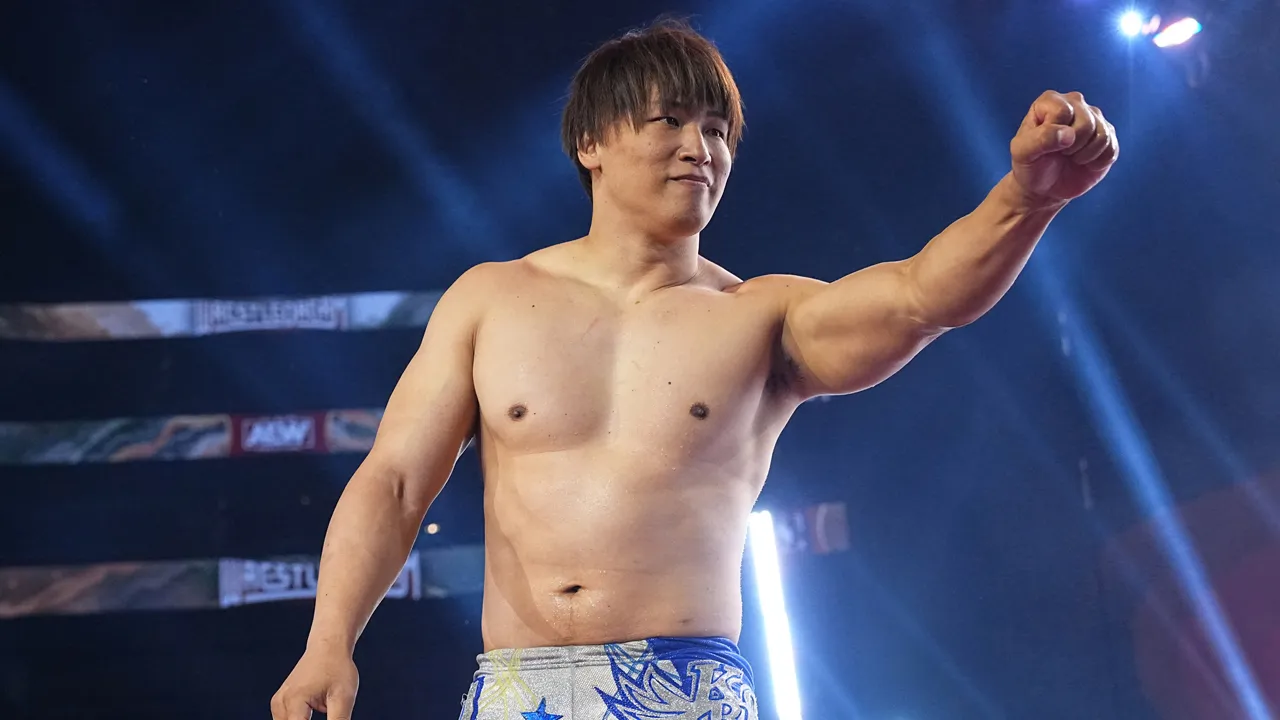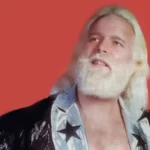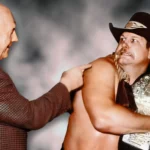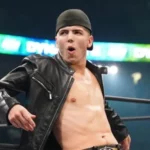Step into the electrifying world of professional wrestling and meet Kota Ibushi, a name synonymous with awe-inspiring athleticism and captivating showmanship. Known to fans worldwide as the “Golden Star,” Ibushi’s journey, from humble beginnings to wrestling superstardom, is nothing short of remarkable. Join us as we unravel the captivating story of Kota Ibushi, exploring his unique in-ring style, the inspirations that have shaped his artistry, and the captivating narrative that continues to unfold with every heart-stopping match.
Facts About Kota Ibushi
Even if professional wrestling isn’t your usual pastime, you’ve likely encountered the name Kota Ibushi. This Japanese wrestling sensation has cemented his place as a true icon, recognized for his death-defying, high-flying maneuvers and an impressive collection of championship titles from around the globe. His matches are a spectacle of athleticism, often leaving audiences speechless with his innovative and daring style.
From Small Town to Wrestling Stardom
Born in 1982, Kota Ibushi’s destiny lay not in the mundane, but in the exhilarating realm of professional wrestling. His passion for the sport was evident from a young age, and he dedicated himself to honing his craft at the esteemed Dory Funk Jr. Dojo. This experience laid the groundwork for his future success, instilling in him the discipline and skills necessary to thrive in the competitive world of professional wrestling.
The DDT Explosion
Ibushi’s breakthrough moment arrived with DDT Promotion, a company renowned for its unique blend of athleticism and entertainment. It was here that Ibushi truly captured the attention of the wrestling world, captivating fans with his breathtaking moves and unbridled passion. His rise through the ranks was nothing short of meteoric, quickly transitioning from an exciting newcomer to a main event mainstay.
King of the Junior Heavyweights
Ibushi’s reign as a multi-time IWGP Junior Heavyweight Champion solidified his place as one of the division’s all-time greats. His dominance during this period is still debated among wrestling enthusiasts, with many arguing that his reign remains unmatched.
Global Domination – Not Just a Fancy Phrase
Kota Ibushi’s star power extends far beyond his home country. He’s a global wrestling phenomenon, having competed in prominent organizations like NJPW, AJPW, and even enjoying a stint in the WWE. His unique, high-energy style has captivated audiences on an international scale, solidifying his reputation as a true wrestling icon.
Conquering the G1 Climax
In 2019, Ibushi achieved a significant milestone by winning the G1 Climax tournament, widely considered one of the most grueling and prestigious tournaments in professional wrestling. This victory cemented his status among the wrestling elite, comparable to achieving ultimate glory in sports like football or soccer.
Tag Team Glory: The Golden Lovers
Teaming up with fellow wrestling icon Kenny Omega, Ibushi formed the “Golden Lovers,” a tag team that set the wrestling world ablaze. Their chemistry was undeniable, resulting in unforgettable matches that left audiences on the edge of their seats. To this day, the Golden Lovers are regarded as one of the greatest tag teams in wrestling history, their legacy etched in the annals of wrestling lore.
Passing the Torch: Ibushi the Mentor
Beyond his accomplishments in the ring, Ibushi is also recognized for his dedication to mentoring younger wrestlers. He generously shares his experience and knowledge, nurturing the next generation of wrestling stars. This commitment to the sport’s future showcases his character and cements his legacy as not just a champion, but a true ambassador for professional wrestling.
Wrestle Kingdom: The Main Event
In 2020, Ibushi stood tall as the headliner of Wrestle Kingdom, Japan’s most prestigious wrestling event. This honor speaks volumes about his drawing power and popularity, highlighting his ability to captivate audiences on the grandest stage.
More Championship Gold: Intercontinental Champion
Ibushi’s reign as a multiple-time Intercontinental Champion showcased his versatility and ability to compete at the highest level across different weight classes. He defied expectations, proving himself to be much more than a one-dimensional wrestler.
Epic Rivalries: Clashing with Legends
Ibushi’s career is marked by epic rivalries with some of wrestling’s biggest names, including Shinsuke Nakamura and Hiroshi Tanahashi. These clashes became legendary chapters in his career, further solidifying his status as an icon.
Beyond the Big Leagues: Pro-Wrestling NOAH
Ibushi’s impact extends to Pro-Wrestling NOAH, another prominent Japanese promotion, where he consistently delivers outstanding performances, demonstrating his commitment to captivating audiences regardless of the platform.
Kota Ibushi’s journey is a testament to his extraordinary talent, unwavering determination, and genuine love for professional wrestling. His influence on the sport is undeniable, and his legacy as a true innovator continues to inspire aspiring wrestlers and captivate audiences worldwide.
Who Trained Kota Ibushi?
Kota Ibushi’s mastery of professional wrestling often leaves fans wondering about the individuals who helped shape his extraordinary abilities. His journey to becoming one of the most exciting wrestlers on the planet is a compelling tale of self-discovery, dedication, and the guidance of experienced mentors.
A Self-Made Wrestler (Well, Almost!)
From a young age, Ibushi displayed an unwavering passion for wrestling, spending countless hours refining his skills through self-training. He wasn’t afraid to experiment, pushing the boundaries of what was considered possible in the ring. It was during these formative years that he began to develop his unique and innovative style.
However, even the most naturally gifted athletes recognize the value of guidance. Veteran wrestlers like Shuji Kondo and Mikami recognized Ibushi’s raw talent and provided invaluable mentorship, helping him grasp the technical nuances of the sport and offering unwavering support. They served as the wise sages guiding a young prodigy towards greatness.
Leveling Up at the DDT Dojo
Ibushi’s skills reached new heights when he joined the DDT Dojo, a training ground known for its intensity and reputation for producing some of wrestling’s most innovative performers. It was here that he trained under the watchful eyes of industry legends like Hiroshi Tanahashi, Mikami, Sanshiro Takagi, and Shuji Kondo. These mentors pushed Ibushi to his limits, helping him expand his technical repertoire and further develop his signature style.
The Birth of a Wrestling Rockstar
What makes Ibushi’s in-ring style so captivating is its fusion of various influences. He seamlessly blends high-flying maneuvers with technical holds borrowed from different wrestling styles. His adaptability and willingness to experiment keep his opponents guessing, creating a truly unique and exhilarating experience for audiences.
The Takeaway from Ibushi’s Training Journey
- Ibushi’s success is a testament to the power of self-motivation and the importance of seeking guidance from seasoned mentors.
- His willingness to experiment and challenge conventional wrestling norms has been instrumental in shaping his unique style.
- The rigorous training at the DDT Dojo, under the guidance of renowned trainers, helped refine his technique and elevate his skills to an elite level.
- Ibushi’s journey serves as an inspiration for aspiring wrestlers, demonstrating that a combination of dedication, talent, and the willingness to learn from the best can pave the path to extraordinary achievement.
Ibushi’s story is a reminder that even the most celebrated athletes benefit from the guidance and support of those who came before them. His journey, marked by self-belief, relentless pursuit of improvement, and the wisdom of his mentors, serves as a testament to the transformative power of passion, dedication, and the pursuit of excellence.
Where has Kota Ibushi been?
After captivating audiences with his daredevil moves and undeniable charisma, Kota Ibushi embarked on a journey that piqued the curiosity of wrestling fans worldwide. In February 2016, he made the decision to part ways with New Japan Pro-Wrestling (NJPW), the company that had become synonymous with his rise to stardom.
This decision wasn’t about stepping away from the ring, but rather about exploring new opportunities. Ibushi embraced a freelance career, testing his skills against a diverse range of opponents in promotions across the globe. He graced the rings of DDT Pro-Wrestling, a company known for its unique blend of comedy and hardcore wrestling, and he even answered the call of WWE, competing in their Cruiserweight Classic tournament, a showcase of the world’s best smaller weight-class wrestlers.
This period of exploration proved to be invaluable for Ibushi, allowing him to refine his craft and adapt to different wrestling styles. It was a period of growth, pushing him outside his comfort zone and ultimately making him a more well-rounded performer.
However, the allure of NJPW proved irresistible. In a move that sent shockwaves through the wrestling world, Ibushi made his triumphant return in early 2019, signing a full-time contract and sending fans into a frenzy. His return was about more than just nostalgia; it marked the beginning of a dominant chapter in his career.
Ibushi wasted no time reclaiming his spot at the top, reminding everyone why he was considered one of the most exciting wrestlers on the planet. Then came the championship gold. In 2021, he achieved a feat many believed was inevitable – he captured the prestigious IWGP Heavyweight Championship. But Ibushi’s ambitions didn’t end there. He went on to unify that title with the IWGP Intercontinental Championship, becoming the first-ever IWGP World Heavyweight Champion.
This monumental achievement solidified his place as a true legend in NJPW, etching his name in the history books of one of the world’s most respected wrestling organizations. Kota Ibushi’s career has been anything but predictable. His willingness to take risks, explore new horizons, and ultimately return to his roots has made him one of the most captivating figures in professional wrestling today.
What is Kota Ibushi’s Finishing Move?
Kota Ibushi’s matches are renowned for their breathtaking athleticism, innovative offense, and captivating showmanship. But when it comes to securing victory, Ibushi has two finishing moves in his arsenal that strike fear into the hearts of his opponents: the Phoenix Splash and the Kami-go-ye.
The Phoenix Splash: A Thing of Beauty and Brutality
The Phoenix Splash is perhaps Ibushi’s most iconic move, a visually stunning aerial assault that leaves audiences gasping in awe. Picture this: Ibushi scales the top rope, balances precariously, and then launches himself into the air with the grace of a seasoned gymnast. He soars through the air, seemingly defying gravity, before crashing down upon his opponent with incredible force. The impact resonates throughout the arena, leaving no doubt about the power and precision of this awe-inspiring maneuver.
The Kami-go-ye: A Move of Devastating Efficiency
In recent years, Ibushi has added another lethal weapon to his arsenal: the Kami-go-ye. This devastating knee strike often comes out of nowhere, catching opponents off guard and ending matches in a flash. It’s a testament to Ibushi’s versatility, showcasing his ability to seamlessly blend lightning-fast strikes with his signature high-flying offense.
Which Move Reigns Supreme?
The debate over whether the Phoenix Splash or the Kami-go-ye is the superior finisher is a testament to Ibushi’s creativity and the captivating nature of his in-ring performances. The Phoenix Splash is undoubtedly the more visually spectacular of the two, a move that embodies Ibushi’s willingness to push the boundaries of athleticism. However, the Kami-go-ye represents a more strategic approach, a move designed to end matches swiftly and decisively.
Some wrestling analysts speculate that the increased use of the Kami-go-ye might be a strategic decision to protect Ibushi’s body from the wear and tear of repeatedly performing the high-impact Phoenix Splash. This theory highlights the delicate balance wrestlers must strike between captivating audiences with visually impressive moves and ensuring the longevity of their careers.
Ultimately, the choice of finishing move often depends on the opponent and the flow of the match. Regardless of which move he chooses to deploy, one thing remains certain: Kota Ibushi’s finishing maneuvers are a testament to his unique skill set, solidifying his reputation as one of the most innovative and exciting wrestlers in the world.
Is Kota Ibushi Hurt?
The wrestling world was dealt a blow in January 2024 when news broke that Kota Ibushi, the “Golden Star” known for his breathtaking aerial maneuvers, had suffered significant ankle injuries. The injuries, sustained during a match, have cast a shadow of uncertainty over his future in the ring.
Initial reports suggest a lengthy recovery period, with estimates ranging from six months to a full year. To complicate matters further, Ibushi has chosen to forgo surgery on a pre-existing shoulder injury, a decision that has sparked debate among wrestling fans and analysts. Some speculate that this decision stems from a desire to avoid another surgical procedure, particularly after enduring multiple surgeries throughout his career. Others suggest that it might be rooted in frustration with the rehabilitation process. Regardless of the reason, Ibushi’s decision adds another layer of complexity to his recovery journey.
Adding to the uncertainty surrounding Ibushi’s future is his strained relationship with New Japan Pro Wrestling (NJPW). Ibushi has been publicly critical of the company, even alleging that he’s received threats. This very public discord has created a rift between Ibushi and NJPW, making his return to the promotion seem unlikely in the near future.
The wrestling world eagerly awaits Ibushi’s return, with fans hoping for a full recovery and a chance to witness his extraordinary talent once again. His unique style, unwavering dedication, and ability to inspire have earned him a special place in the hearts of wrestling enthusiasts worldwide.
When did Kota Ibushi start wrestling?
Kota Ibushi’s journey into the world of professional wrestling began on July 1st, 2004, etching a significant date in the timeline of a career that would eventually reach legendary status. He made his debut with Dramatic Dream Team (DDT), a company known for its eclectic blend of high-flying action and unconventional storytelling, facing off against Kudo in a match that marked the beginning of a remarkable ascent.
DDT provided the perfect environment for Ibushi to cultivate his talents. The company’s emphasis on innovation and pushing the boundaries of traditional wrestling aligned perfectly with Ibushi’s daredevil spirit and desire to captivate audiences. He quickly rose through the ranks, capturing championship after championship and establishing himself as a force to be reckoned with.
Driven by an ambition to test his skills against the very best, Ibushi made a pivotal decision in 2009: he began wrestling part-time for New Japan Pro-Wrestling (NJPW), a company renowned for its more traditional, hard-hitting style. This dual commitment allowed him to refine his abilities, blending the high-flying offense he honed in DDT with the technical prowess demanded in NJPW.
This strategic approach paid off handsomely. Ibushi eventually transitioned to NJPW full-time and etched his name in the company’s history books by becoming the only wrestler to win all three of their most prestigious tournaments: the Best of the Super Juniors (2011), the New Japan Cup (2015), and the legendary G1 Climax (2019, 2020).
Kota Ibushi’s journey from his debut match in DDT to his reign as a top star in NJPW is a testament to his adaptability, athleticism, and unwavering dedication to his craft. He has consistently pushed the boundaries of what’s possible in the ring, captivating audiences with his unique blend of breathtaking maneuvers and technical wrestling prowess.
Were Kenny Omega and Kota Ibushi in a Relationship?
The world of professional wrestling thrives on speculation, and few partnerships have generated as much intrigue and debate as the bond between Kenny Omega and Kota Ibushi, better known to fans as the “Golden Lovers.” Their undeniable chemistry, both in the ring as a dominant tag team and in their interactions outside of it, has led to endless speculation about the true nature of their relationship.
Adding fuel to the fire was a storyline that deliberately blurred the lines between kayfabe (the portrayal of staged events as real) and reality. The Golden Lovers’ narrative, marked by emotional depth and displays of affection, resonated deeply with audiences. While some interpreted these interactions as a reflection of genuine romantic feelings, others saw them as a close friendship amplified for entertainment purposes.
Both Omega and Ibushi have addressed the speculation surrounding their relationship, using terms like “unique” and “unbreakable” to describe their bond. Ibushi, in particular, has openly acknowledged Omega’s significant presence in his life. However, they’ve consistently framed their connection as a profound friendship rooted in mutual respect, admiration, and a shared passion for professional wrestling.
It’s important to acknowledge that the world of professional wrestling, particularly at the time of the Golden Lovers’ initial rise to prominence, has historically been slow to embrace LGBTQ+ representation. This context makes it challenging to definitively determine whether the storyline was intended as a coded portrayal of a same-sex relationship or simply a deep friendship presented within the confines of what was then considered acceptable.
Irrespective of the true nature of their relationship, the impact of the Golden Lovers storyline cannot be overstated. It challenged long-held norms within the wrestling industry and sparked important conversations about representation and inclusivity. Some argue that their story, whether intentionally or unintentionally, provided a degree of visibility for LGBTQ+ relationships in a space where such representation had been sorely lacking.
Ultimately, the question of whether Kenny Omega and Kota Ibushi were ever romantically involved remains unanswered. Both individuals have chosen to keep certain aspects of their personal lives private, a decision that deserves respect. However, their story, marked by undeniable chemistry and a narrative that pushed boundaries, continues to resonate with fans and serves as a reminder of the evolving landscape of professional wrestling and its potential to embrace diverse stories and perspectives.
Who Trained Kairi Sane?
Kairi Sane, known for her captivating in-ring presence and high-flying prowess, embarked on her wrestling journey under the watchful eye of Fuka Kakimoto, a legend in the world of Japanese mixed martial arts (MMA). Kakimoto’s influence played a crucial role in shaping Sane’s athletic foundation and instilling in her the discipline and determination that would become hallmarks of her career.
Sane’s training didn’t end there. She further honed her craft at World Wonder Ring Stardom, a Japanese promotion renowned for its fast-paced, hard-hitting style. Stardom provided the perfect environment for Sane to develop her unique blend of athleticism and showmanship, transforming her from a promising rookie into the “Pirate Princess” adored by fans worldwide.
By the time Sane arrived in WWE, she had already earned a reputation as one of the most gifted wrestlers in the world, a testament to the exceptional training she received in Japan. Her time at the WWE Performance Center undoubtedly helped her adapt to the company’s unique style and demands, but her core abilities, the foundation upon which her success was built, had already been firmly established.
It’s crucial to remember that a wrestler’s development rarely follows a linear path. It’s a complex process shaped by numerous influences: trainers, mentors, opponents, and even setbacks. While we can pinpoint key figures like Kakimoto and the trainers at Stardom, countless others likely contributed to Sane’s journey.
Is Kota Ibushi All Elite?
The wrestling world was set abuzz with speculation: would Kota Ibushi, the “Golden Star” known for his death-defying “Phoenix Splash” and unparalleled athleticism, join the ranks of All Elite Wrestling (AEW)? Rumors swirled, fueled by Ibushi’s history with Kenny Omega, his former tag team partner in NJPW and a prominent figure in AEW.
The prospect of a Golden Lovers reunion sent fans into a frenzy. The duo’s undeniable chemistry and history-making matches had left an indelible mark on the wrestling world, and the thought of witnessing their magic in an AEW ring was almost too much to bear.
AEW’s reputation for providing wrestlers with creative freedom was undoubtedly appealing to Ibushi, who has always pushed the boundaries of what’s possible in the ring. However, concerns lingered about AEW’s demanding schedule and whether it would be conducive to Ibushi’s long-term health, particularly after his recent injuries.
Then, in a move that shook the wrestling landscape, AEW President Tony Khan made the announcement: Kota Ibushi was officially All Elite. The news sent shockwaves through the industry, solidifying AEW’s position as a major player in the world of professional wrestling and igniting the imaginations of fans eager to witness Ibushi’s unique brand of athleticism on a new stage.
What Does Ibushi Mean?
The name “Ibushi” is more than just a collection of syllables; it’s a tapestry woven from diverse cultural threads, rich in symbolism and open to interpretation. In Japanese, “Ibushi” can be associated with the concept of “fumigation,” hinting at cleansing, purification, and the promise of new beginnings. It evokes a sense of renewal, of a space cleared and prepared for something extraordinary to unfold.
Delving deeper into its Japanese roots, “Ibushi” also carries connotations of “abundance” and “luxuriance.” It’s a name that radiates positive energy, suggesting a life overflowing with potential and fulfillment.
Shifting perspectives to an English-speaking context reveals equally intriguing interpretations. Here, “Ibushi” evokes a sense of “freedom” and “diligence.” It suggests an individual who charts their own course, embraces challenges head-on, and possesses the unwavering determination to transform aspirations into reality.
Whether viewed through a Japanese or English lens, “Ibushi” embodies a spirit of adventure, a thirst for knowledge, and an unwavering determination to leave a lasting mark on the world. It’s a name that whispers of elegance and refinement, of a delicate balance between strength and subtlety.
The true beauty of “Ibushi” lies in its versatility, its ability to transcend borders and resonate with individuals from all walks of life. It’s a name that piques curiosity, sparks the imagination, and invites exploration of its multifaceted depths.
Exploring Other Wrestling Legends
For those eager to delve deeper into the captivating world of professional wrestling, here are a couple of articles guaranteed to pique your interest:
- Discover facts about Velveteen Dream that will leave you amazed at his extraordinary journey in the world of professional wrestling.
- Uncover surprising facts about Benito Mussolini that shed light on the controversial and enigmatic figure who shaped the course of Italian history.
- Unveiling Bernhard Caesar Einstein’s Scientific Achievements: A Legacy in Engineering - July 15, 2025
- Uncover who is Jerry McSorley: CEO, Family Man, Business Success Story - July 15, 2025
- Discover Bernhard Caesar Einstein’s Scientific Contributions: Unveiling a Legacy Beyond Einstein - July 15, 2025















